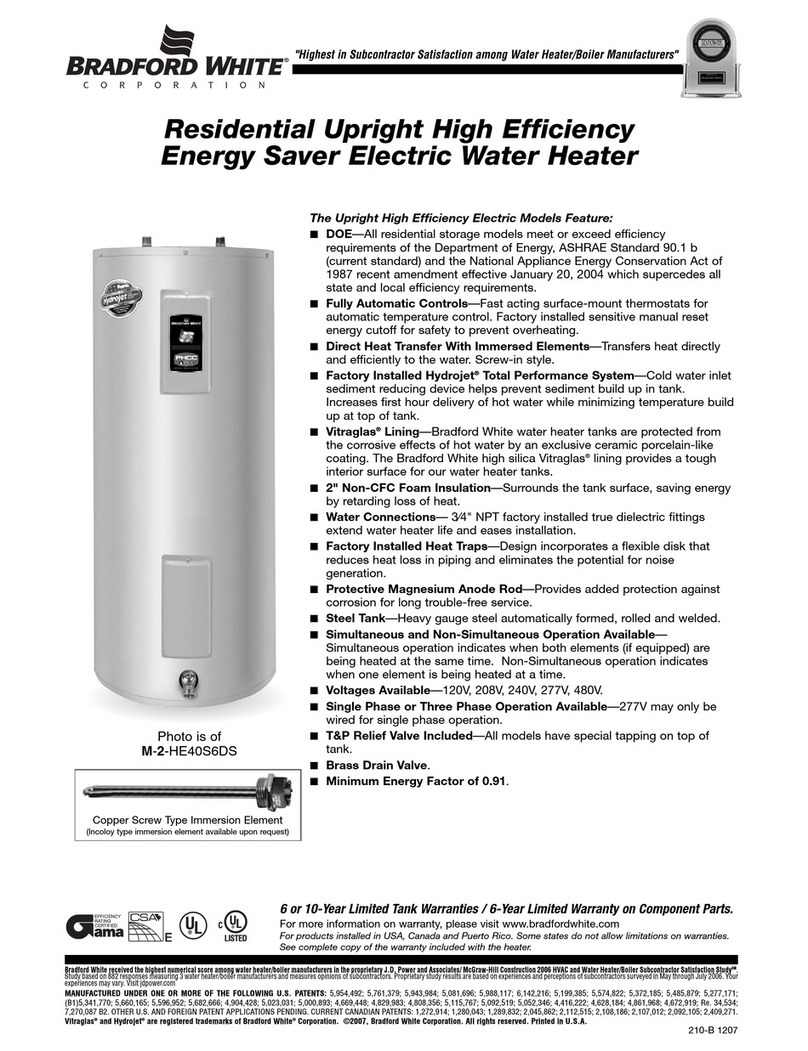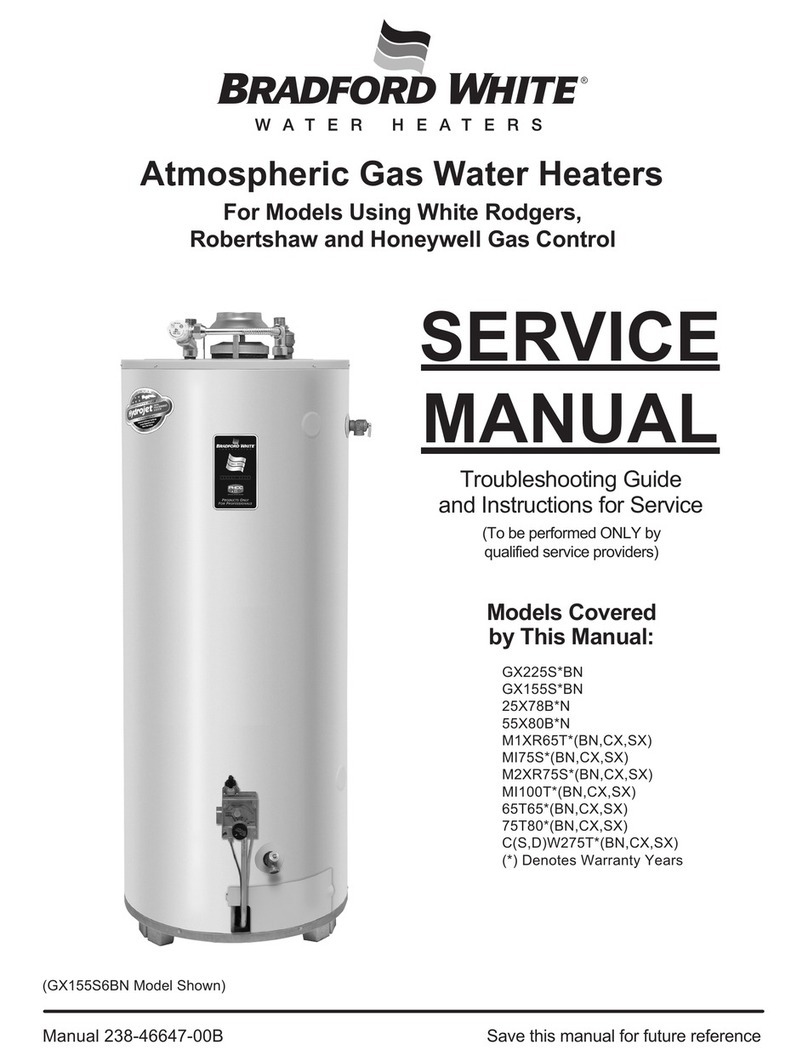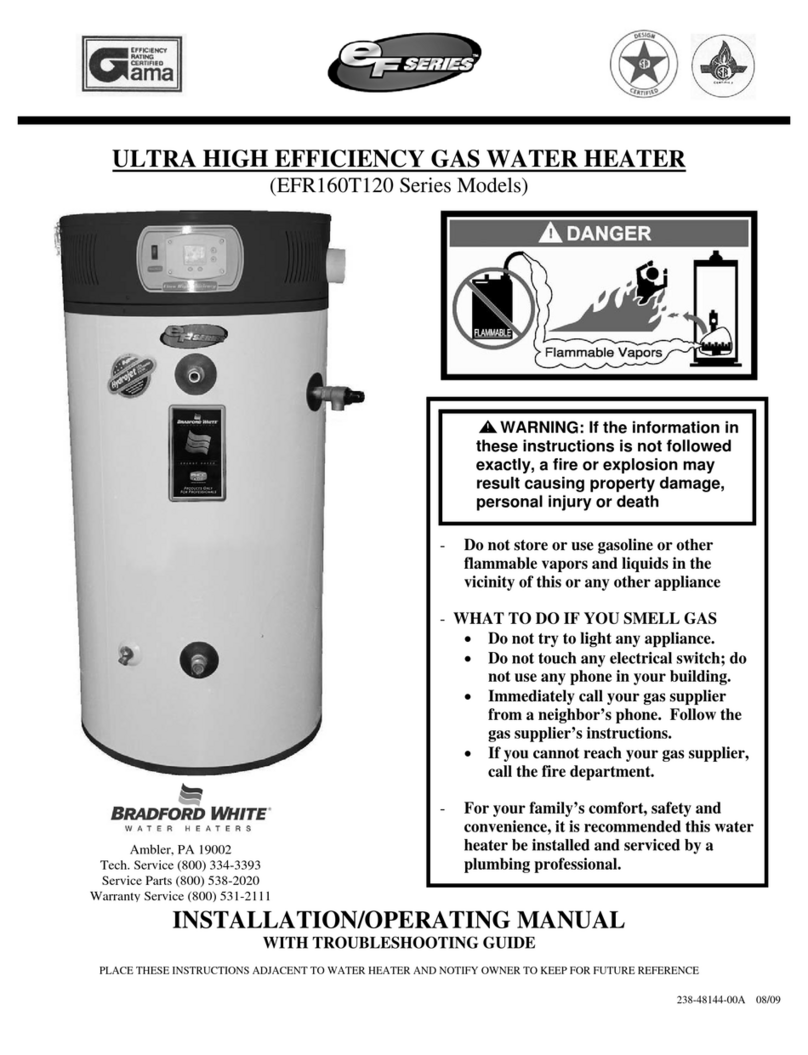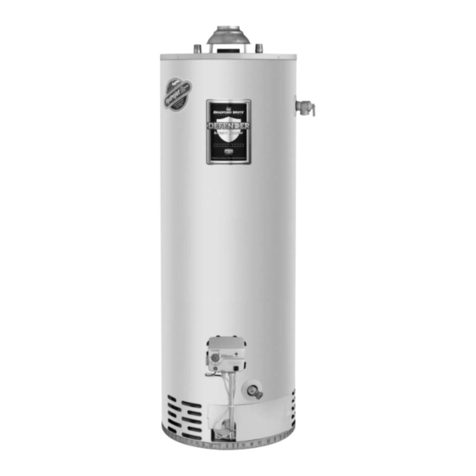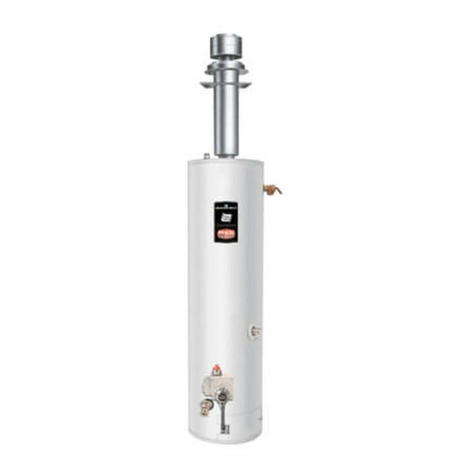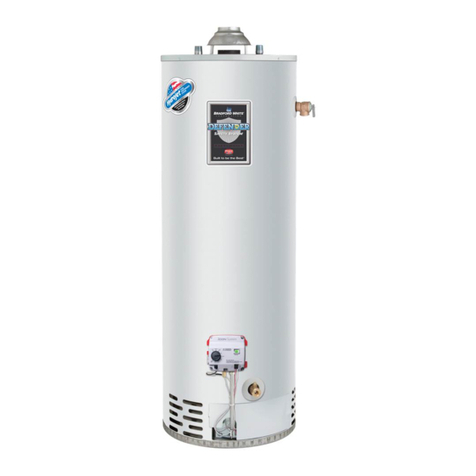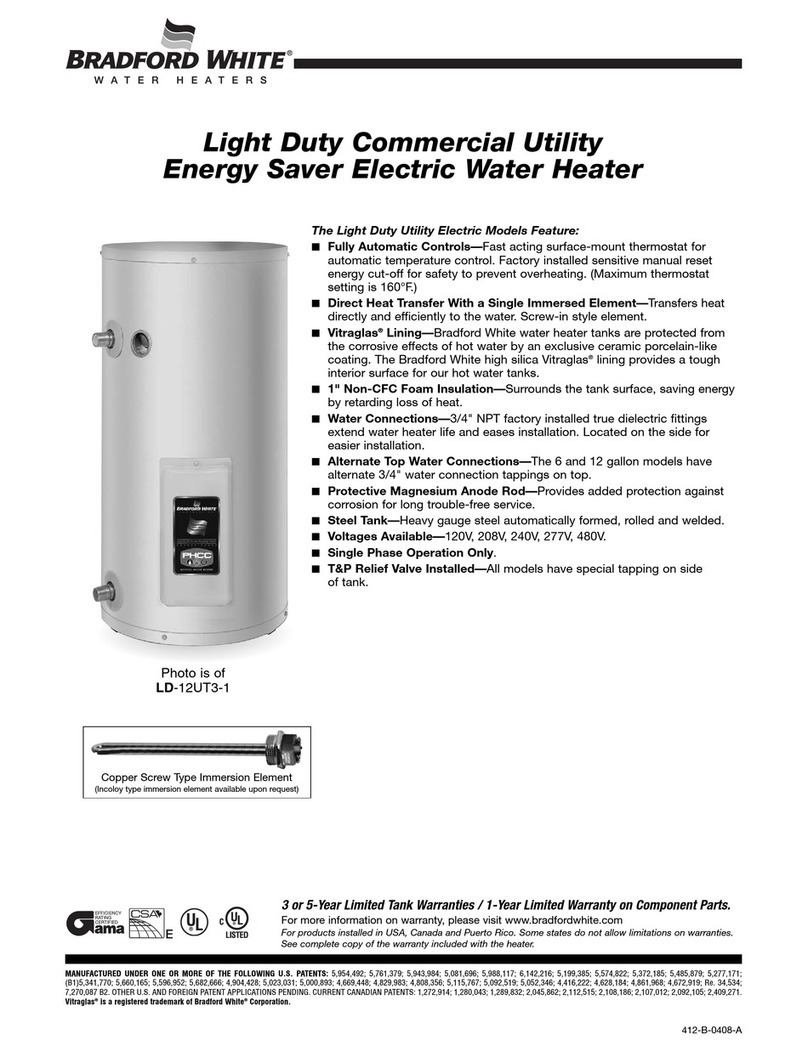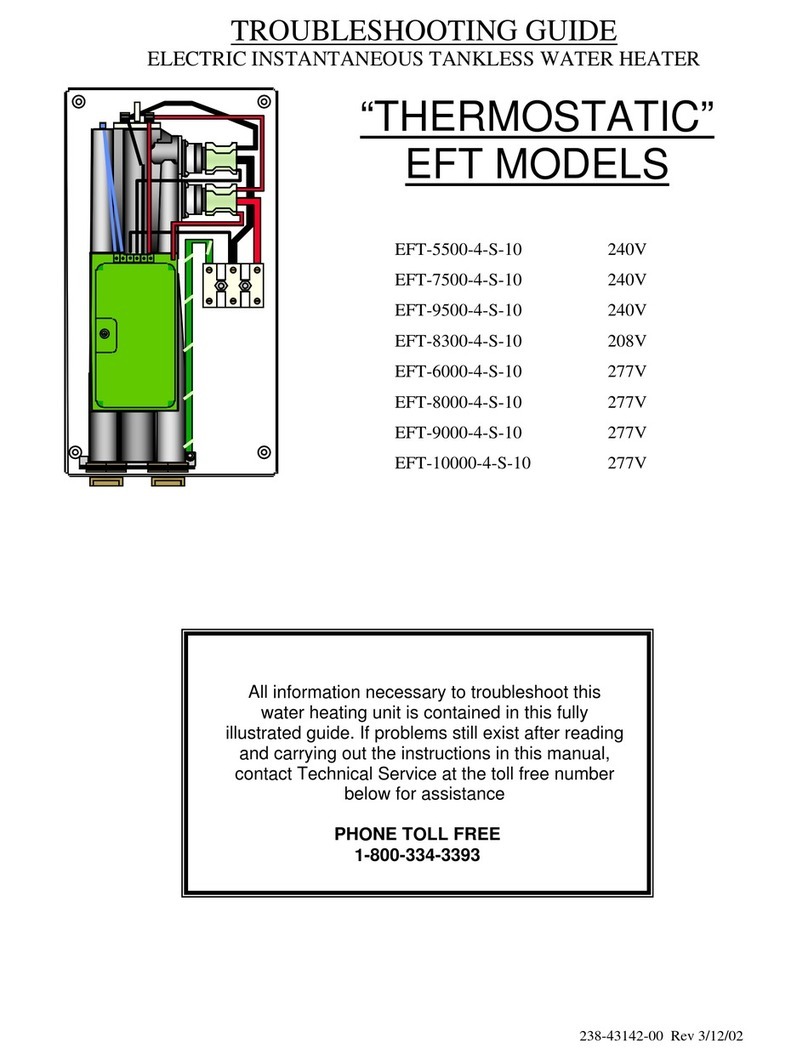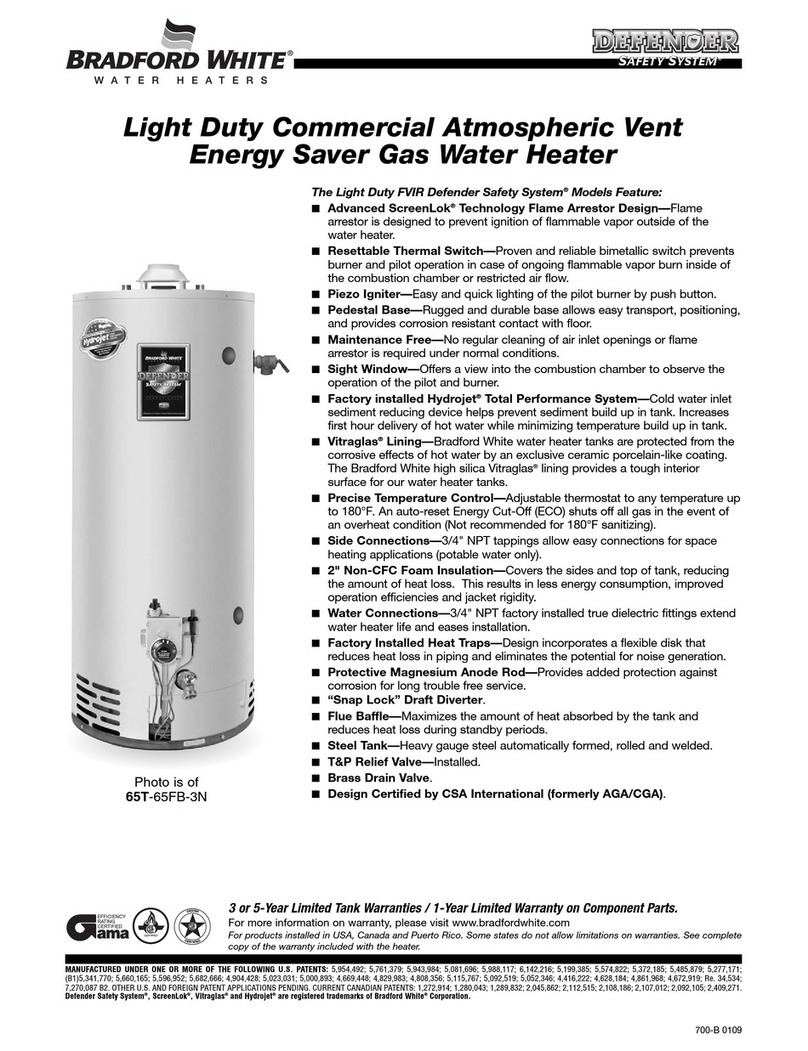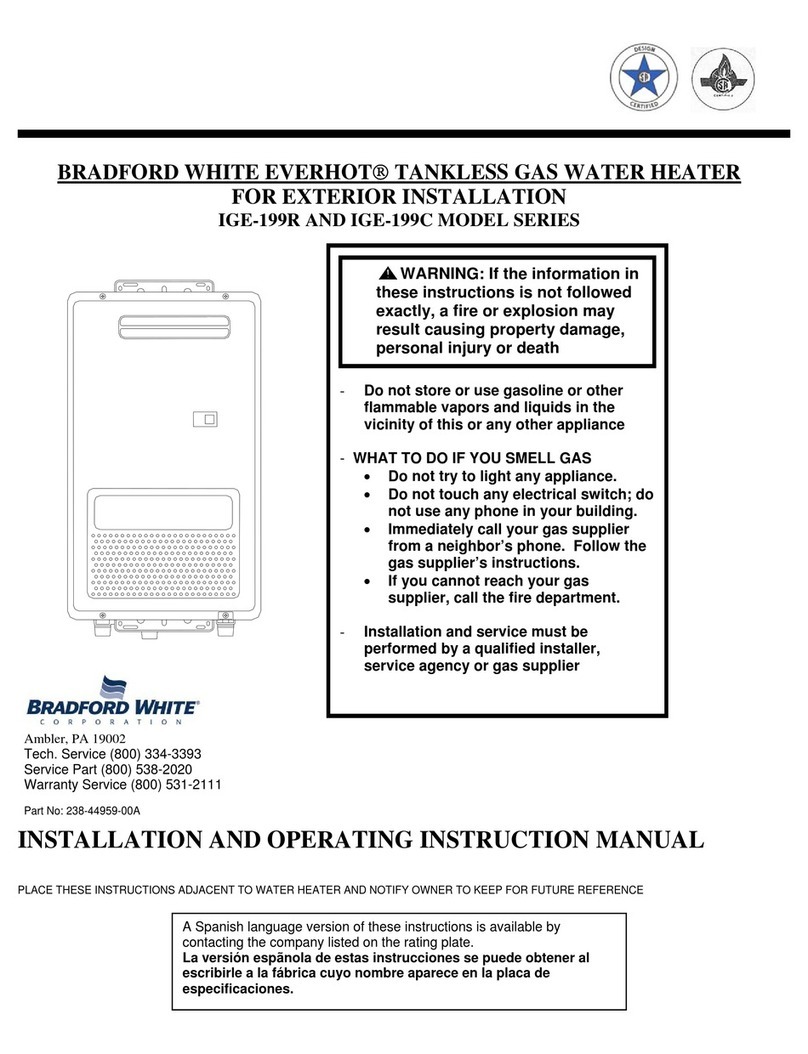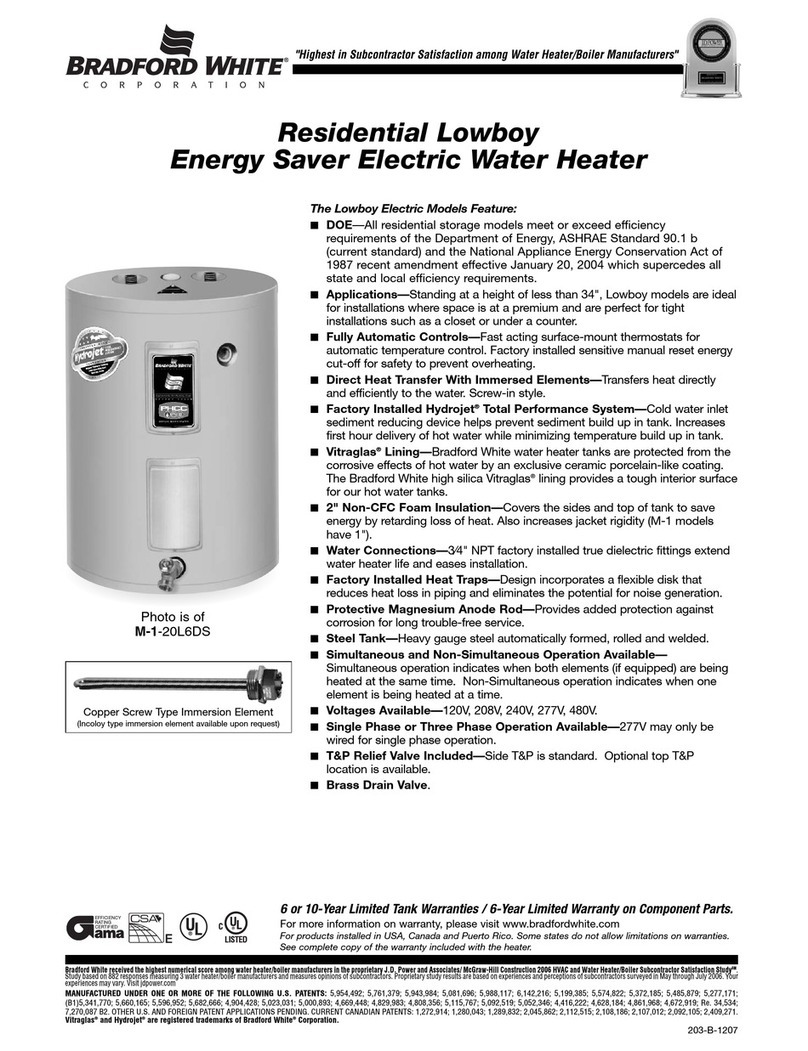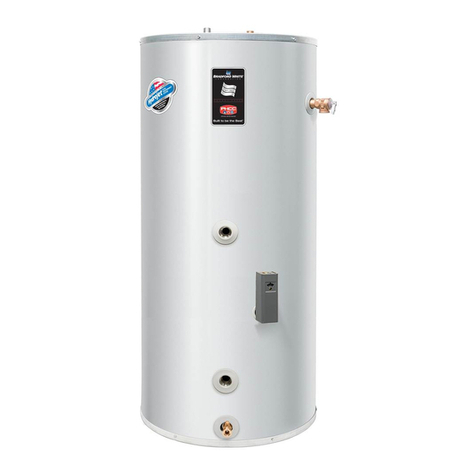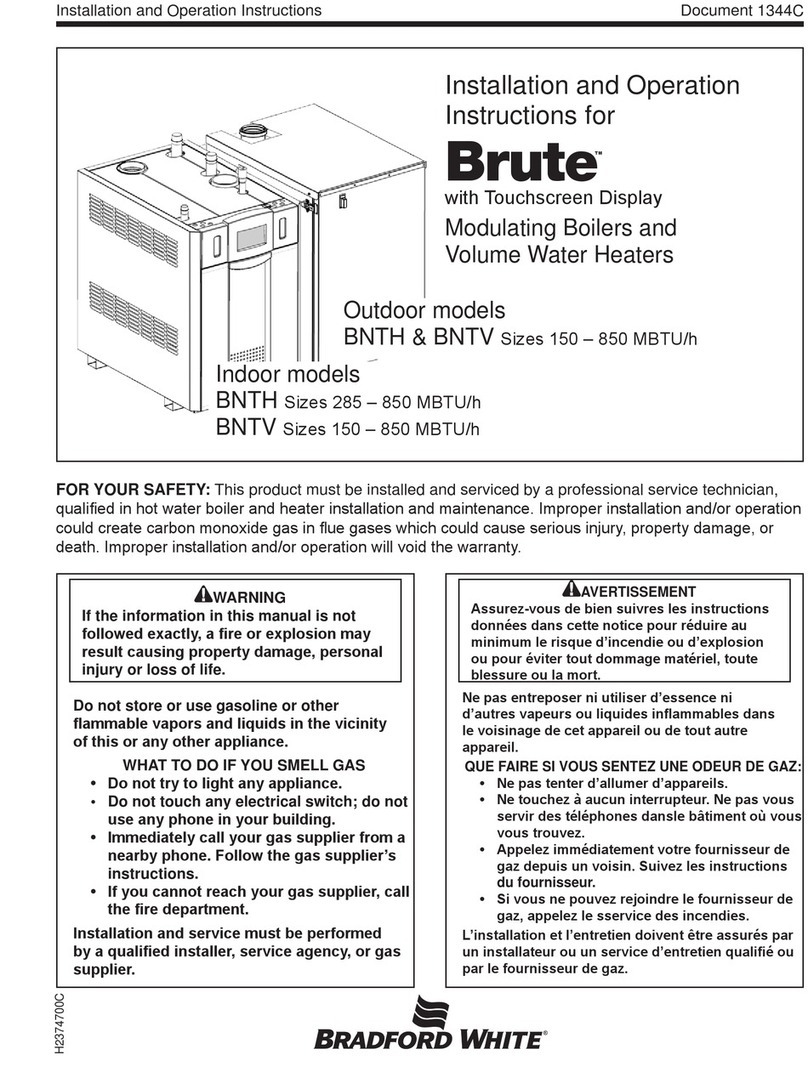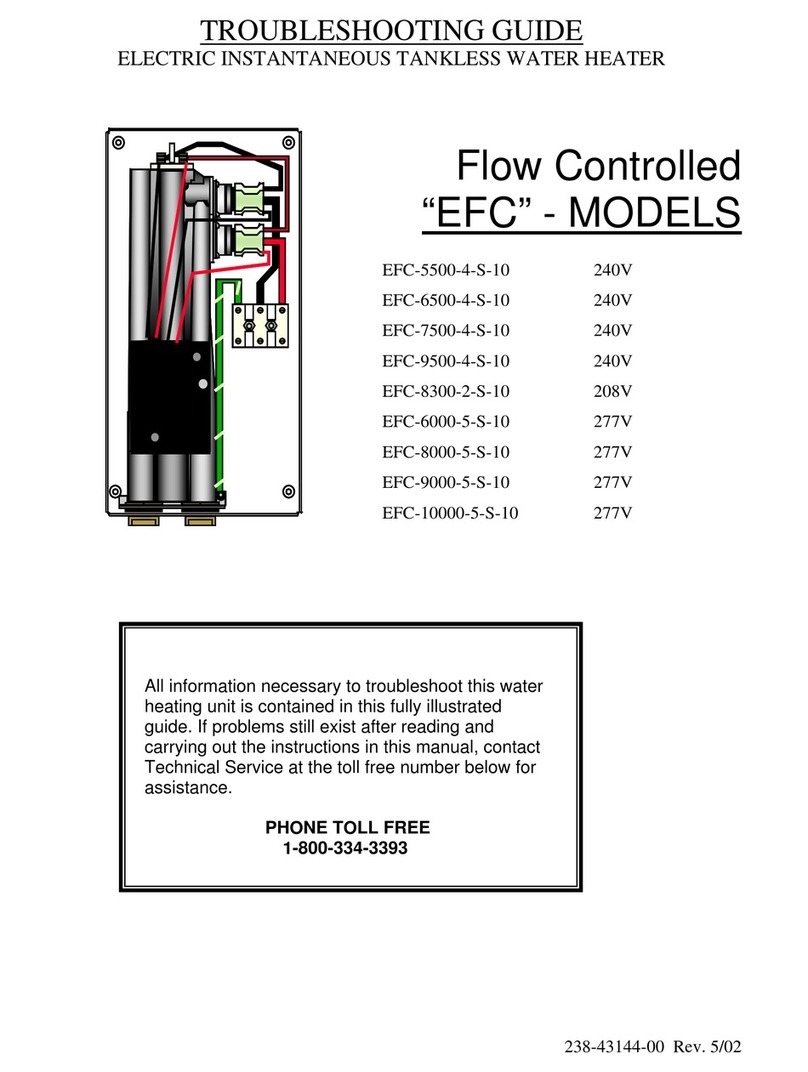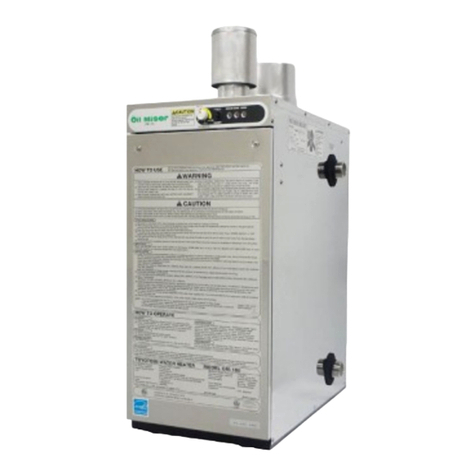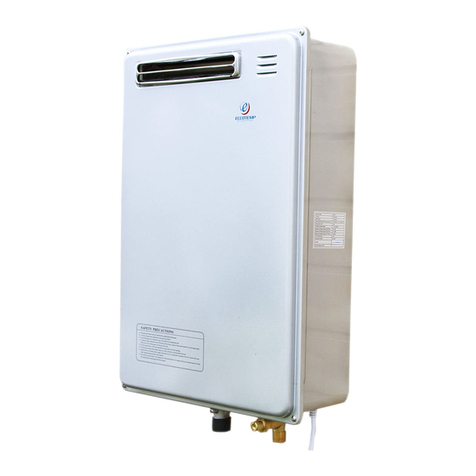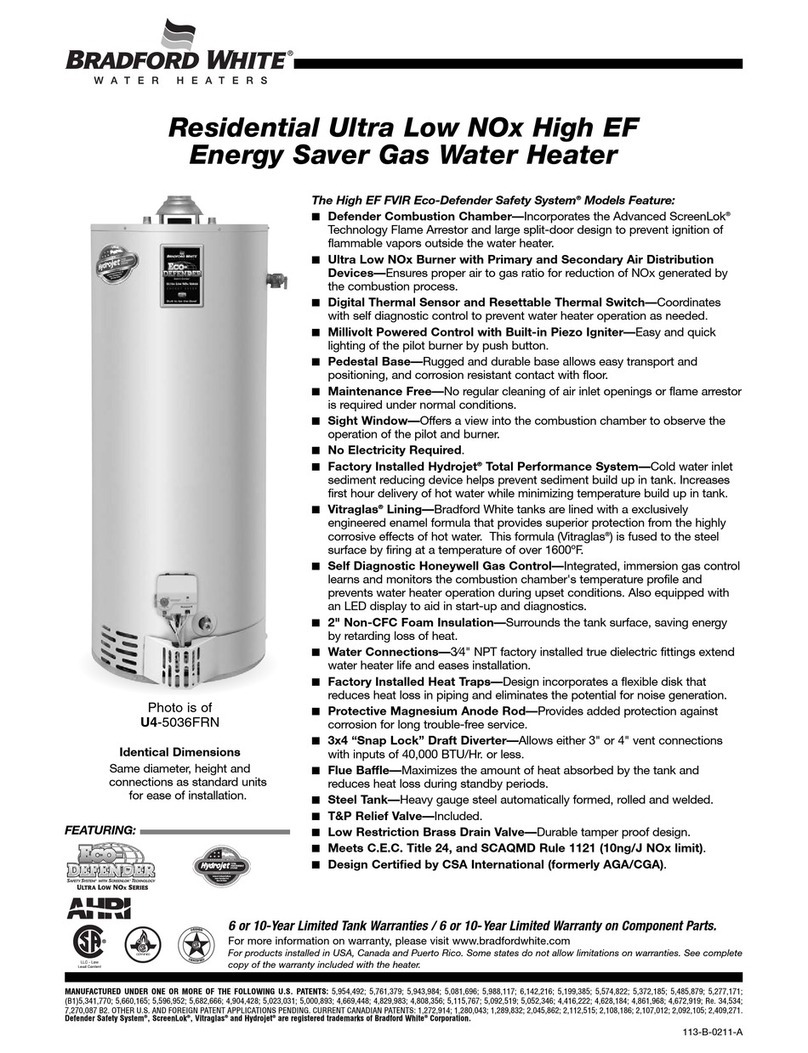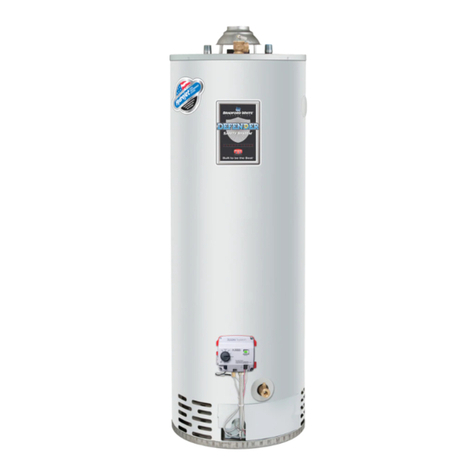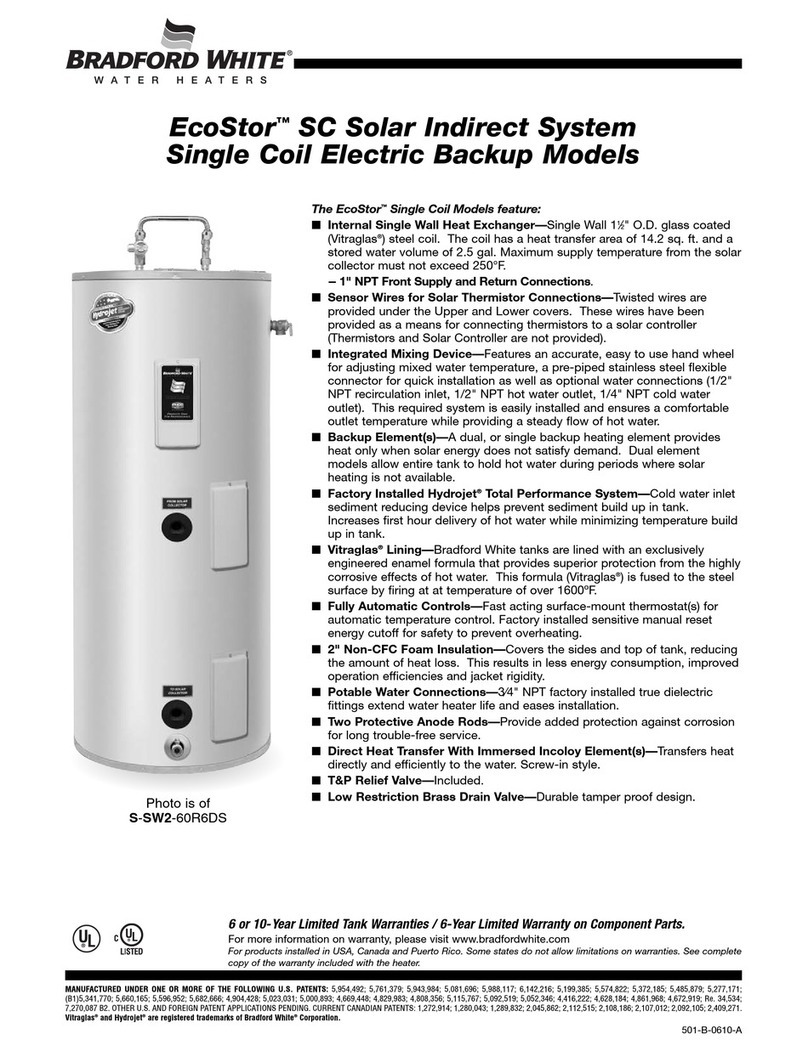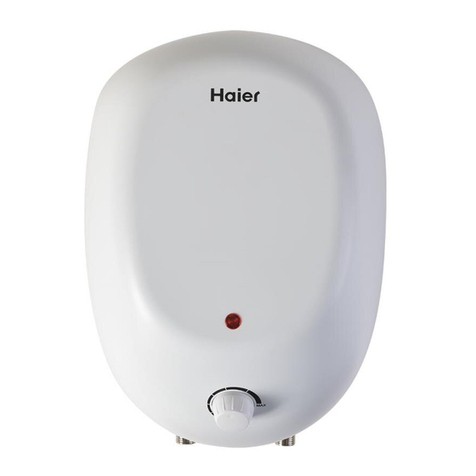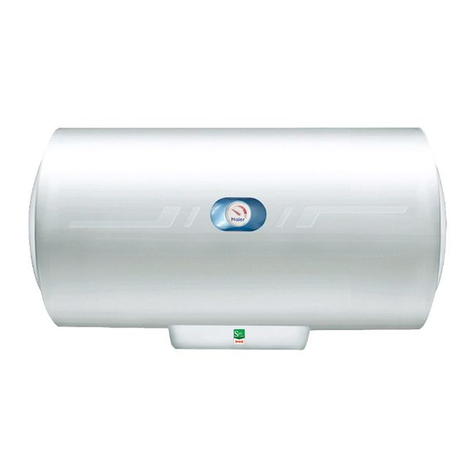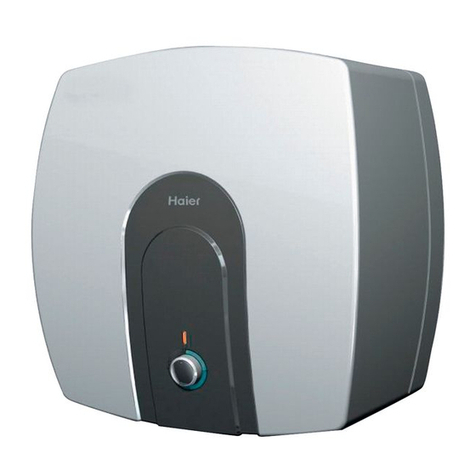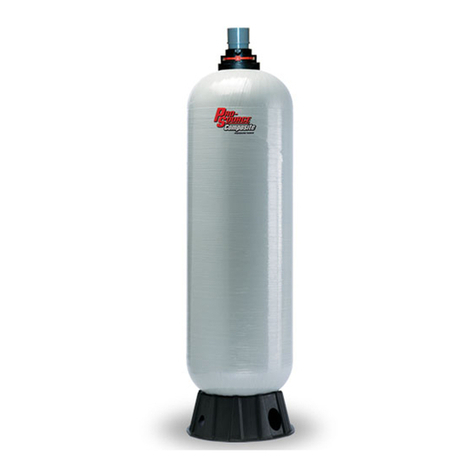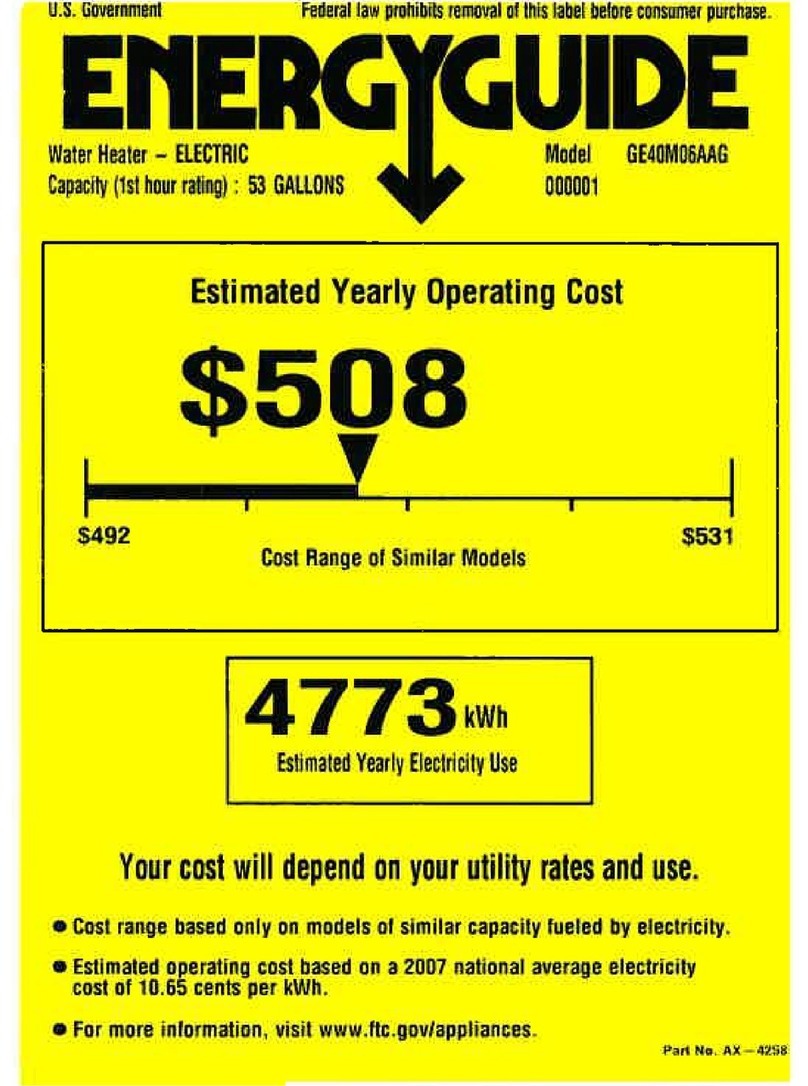
Page 1
Brute
BOILERS AND VOLUME WATER HEATERS
Section 1 -
GENERAL INFORMATION
WARNING
Brute units must be installed in accordance with the
procedures detailed in this manual, or the Bradford
White warranty will be voided. The installation must
conform to the requirements of the local jurisdiction
having authority, and, in the United States, to the latest
edition of the National Fuel Gas Code, ANSI Z223.1/
NFPA54. In Canada, the installation must conform
to the latest edition of CSA B149.1 Natural Gas and
Propane Gas Installation Code, and/or local codes.
Where required by the authority having jurisdiction,
the installation of Brute boilers must conform to
the Standard for Controls and Safety Devices for
Automatically Fired Boilers, ANSI/ASME CSD-1. Any
modications to the boiler, its gas controls, or wiring
may void the warranty. If eld conditions require
modications, consult the factory representative before
initiating such modications.
1.1 Introduction
This manual provides information necessary for the
installation, operation, and maintenance of Bradford
White Brute appliances. Read it carefully before starting
the installation.
All application and installation procedures should
be reviewed completely before proceeding with the
installation. Consult the Bradford White factory, or local
factory representative, with any problems or questions
regarding this equipment. Experience has shown that
most operating problems are caused by improper
installation.
Brute is protected against over pressurization. A
pressure relief valve is included with each Brute.
Some Brutes may require that the PRV be installed
prior to lling the system. Refer to Figures 1-7 for PRV
locations.
DANGER
The inlet gas pressure to the appliance must not
exceed 13” W.C. (3.2kPa).
All installations must be made in accordance with
1) American National Standard Z223.1/NFPA54-Latest
Edition “National Fuel Gas Code” or
2) CSA B149.1 “Natural Gas and Propane Installation
Code” and with the requirement of the local utility or
other authorities having jurisdiction. Such applicable
requirements take precedence over the general
instructions contained herein.
All electrical wiring is to be done in accordance with the
local codes, or in the absence of local codes, with: 1)
The National Electrical Code ANSI/NFPA No. 70-latest
Edition, or 2) CSA STD. C22.1 “Canadian Electrical
Code - Part 1”. This appliance must be electrically
grounded in accordance with these codes.
1.2 ModelIdentication
Consult the rating plate on the unit. The following
information describes the model number structure.
(1-3) ModelSeriesDesignation
B N T = Bradford White, Brute
(4) Usage
H = Hydronic
V = Volume Water
(5-7) Size
1 5 0 = 150,000 BTU/hr input, BNTV only
1 9 9 = 199,000 BTU/hr input, BNTV only
2 1 0 = 210,000 BTU/hr input, BNTV only
2 8 5 = 285,000 BTU/hr input
3 9 9 = 399,000 BTU/hr input
5 0 0 = 500,000 BTU/hr input
6 0 0 = 600,000 BTU/hr input
7 5 0 = 750,000 BTU/hr input
8 5 0 = 850,000 BTU/hr input
(8) Fuel
N = Natural Gas
P = LP Gas
(9) Options Code
X = Standard Unit
J = CSD-1, FM, GAP, IL Code (size 500-850 only)
C - STANDARD (Canada)
D - CSD-1 (Canada)
E - OUTDOOR
F - OUTDOOR (Canada)
G - CSD-1, OUTDOOR
H - CSD-1, OUTDOOR (Canada)
(10) Pump Options
N = Pump included (80-500 only)
X = No pump (conguration available for all sizes)
ModelNomenclature
2 3 4 5 6 7 8 9 10 11
SERIES
BradfordWhite
Brute
USAGE
H - HYDRONIC
V - VOLUME
WATER
SIZE
MBTU/h
1 5 0
1 9 9
2 1 0
2 8 5
3 9 9
5 0 0
6 0 0
7 5 0
8 5 0
FUEL
N - NATURAL
P - PROPANE
OPTIONS CODE
X - STANDARD
J - CSD-1, FM, GAP,
IL
(500-850 only)
C - STANDARD (Canada)
D - CSD-1 (Canada)
E - OUTDOOR
F - OUTDOOR (Canada)
G - CSD-1, OUTDOOR
H - CSD-1, OUTDOOR
(Canada)
PUMP OPTIONS
N - PUMP INCL.
(80-500 only)
X - NO PUMP
REVISION
3 - THIRD
REG DESIGNATION
B3
N T
B- INTERNAL USE
1
B
